34 FelonyConvictions - Really?
Segment #650
Alvin Bragg stacked convoluted charges to seek a conviction that would take Trump out of the presidential race. The Judge had obvious provable bias. There was overwhelming error that the New York Supreme Court must now turn over.
There are some major problems with this case that increase the pressure on the Appeals Court to make this go away. The Dems took a shot at Trump fully expecting to take him out. They missed. And now they will have the full power of the US government looking into every little detail of this case and who said what to whom. This could get even uglier with the Supreme Court ultimately weighing in on what you can and cannot do. This could backfire big time on Biden.
The criminal case led by Manhattan District Attorney Alvin Bragg against Donald Trump is primarily focused on falsifying business records.1
Here is a brief description of the case:
The Charges: Donald Trump was indicted on 34 felony counts of Falsifying Business Records in the First Degree under New York law.2
The Allegation: Prosecutors alleged that Mr. Trump, or others at his direction, falsified business records (such as checks, invoices, and ledger entries) related to the reimbursement of his former lawyer, Michael Cohen.3
The Underlying Scheme: The prosecution argued that this falsification was done with the intent to commit or conceal another crime, which elevated the charge from a misdemeanor to a felony.4 The core scheme was an effort to prevent damaging information, specifically a story about an alleged sexual encounter with adult film actress Stormy Daniels, from becoming public during the 2016 Presidential election (often referred to as a "hush money" payment).5
The Verdict: In May 2024, a jury found Mr. Trump guilty on all 34 felony counts.6
The case centered on whether Mr. Trump knowingly and intentionally directed the misclassification of payments to conceal a conspiracy to unlawfully influence the 2016 election. In short, the statute itself has ample precedent in New York courts for prosecuting those who falsify records to cover up a separate crime. The specific factual and legal combination—falsifying business records of a business entity to conceal a conspiracy to influence a federal election—is what made this application of the law extraordinary. In summary, the specific charge—falsifying business records to conceal another crime—is a well-established New York felony. However, using it to prosecute the concealment of an effort to influence a presidential election through a private company's records is considered an expansion or an unprecedented application of the statute, which is why it is subject to rigorous review on appeal.
Basis of Appeal
The conviction on 34 counts of Falsifying Business Records in the First Degree is being appealed on several grounds, primarily challenging the unique legal theory used by the prosecution and claims of judicial misconduct.1
The main issues and arguments presented for the appeal in the New York state court are:
1. The Legality and Sufficiency of the Charges
The defense challenges the core legal framework used to elevate the charges from misdemeanors to felonies.2
Convoluted Legal Theory: Attorneys argue that the prosecution "concocted" a felony by combining time-barred misdemeanors (falsifying business records in the second degree) with an intent to commit or conceal another crime.3
Federal Preemption: They argue that the underlying "other crime" was a violation of federal campaign finance law, which is a matter of federal, not state, jurisdiction.4 The defense asserts that state prosecutors cannot enforce federal election laws, and therefore, this federal violation cannot legally be the predicate crime for a New York state felony.5
Lack of Jury Unanimity: The defense claims the judge erred by instructing the jury that they did not need to unanimously agree on which specific "unlawful means" (New York Election Law, Federal Campaign Finance Law, or Tax Law violations) the defendant intended to commit or conceal.
2. Presidential Immunity and Admitted Evidence6
The defense claims that the introduction of certain evidence violated the president's right to immunity for official acts.7Violation of Immunity: Citing the Supreme Court's ruling on presidential immunity, the defense contends that the trial judge improperly allowed the admission of evidence and testimony related to actions taken by the defendant while he was in office (such as signing checks in the Oval Office and communications with White House staff).8
The "Official Acts" Line: The trial judge previously ruled that the evidence related to the case involved the defendant's private conduct, not his official duties, but the defense argues this distinction was incorrect and that the use of this evidence "fatally marred" the trial.9
3. Judicial Bias and Recusal10
The appeal argues that the trial judge should have been disqualified from presiding over the case.11 Claimed Conflicts of Interest: The defense points to the judge's small political contributions to Democratic causes in 2020 and the work of his daughter, who runs a political consulting agency that has worked for Democratic politicians.12
Appearance of Partiality: Attorneys claim that these factors created an appearance of impropriety and that the judge's refusal to recuse himself violated the defendant's right to a neutral magistrate.13
The appellate process will focus on these core legal arguments, which question the fundamental application of New York law in this particular case.
Would you like to know how the prosecution is likely to counter these arguments on appeal?


